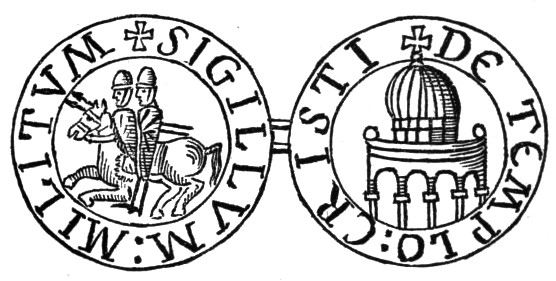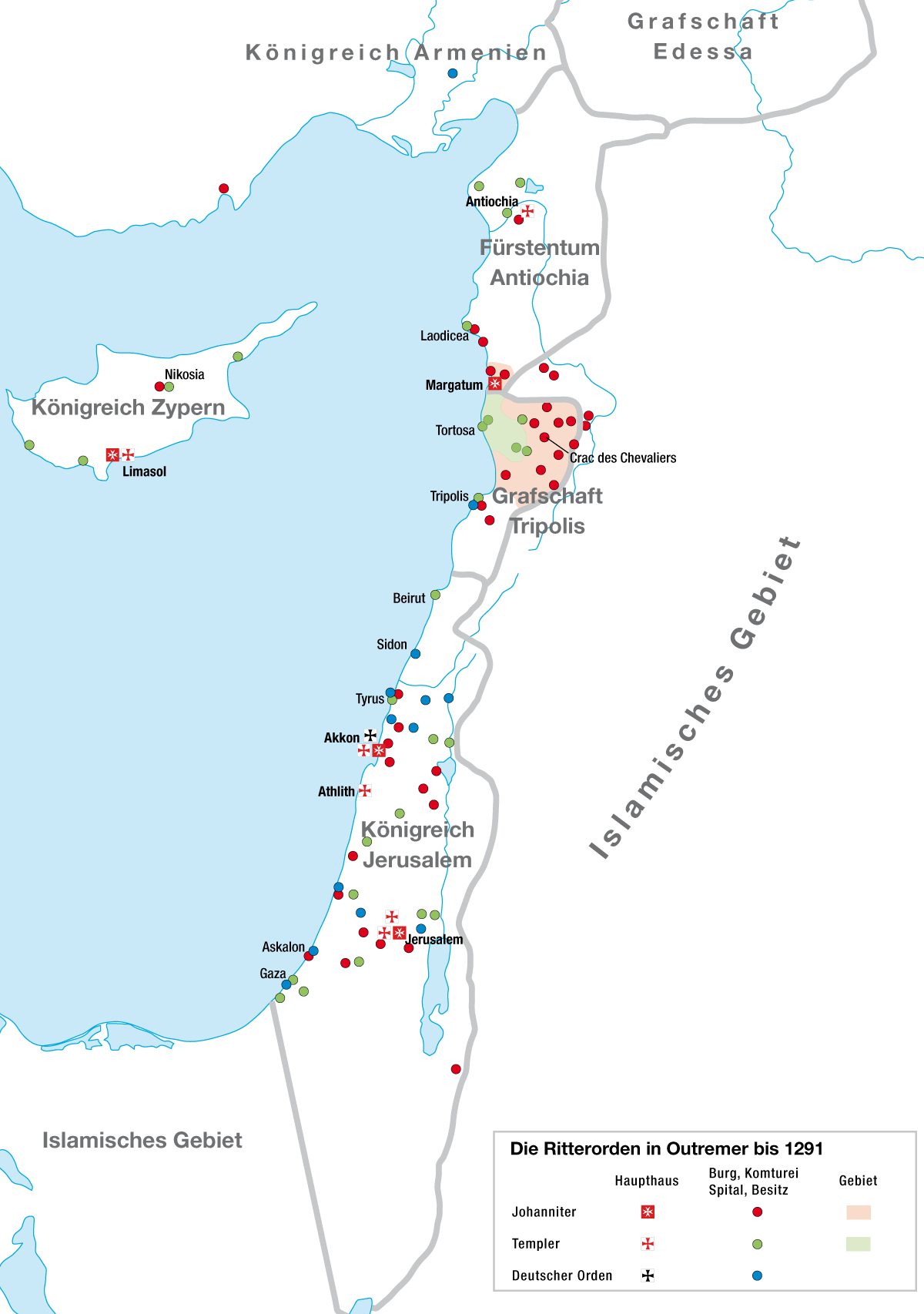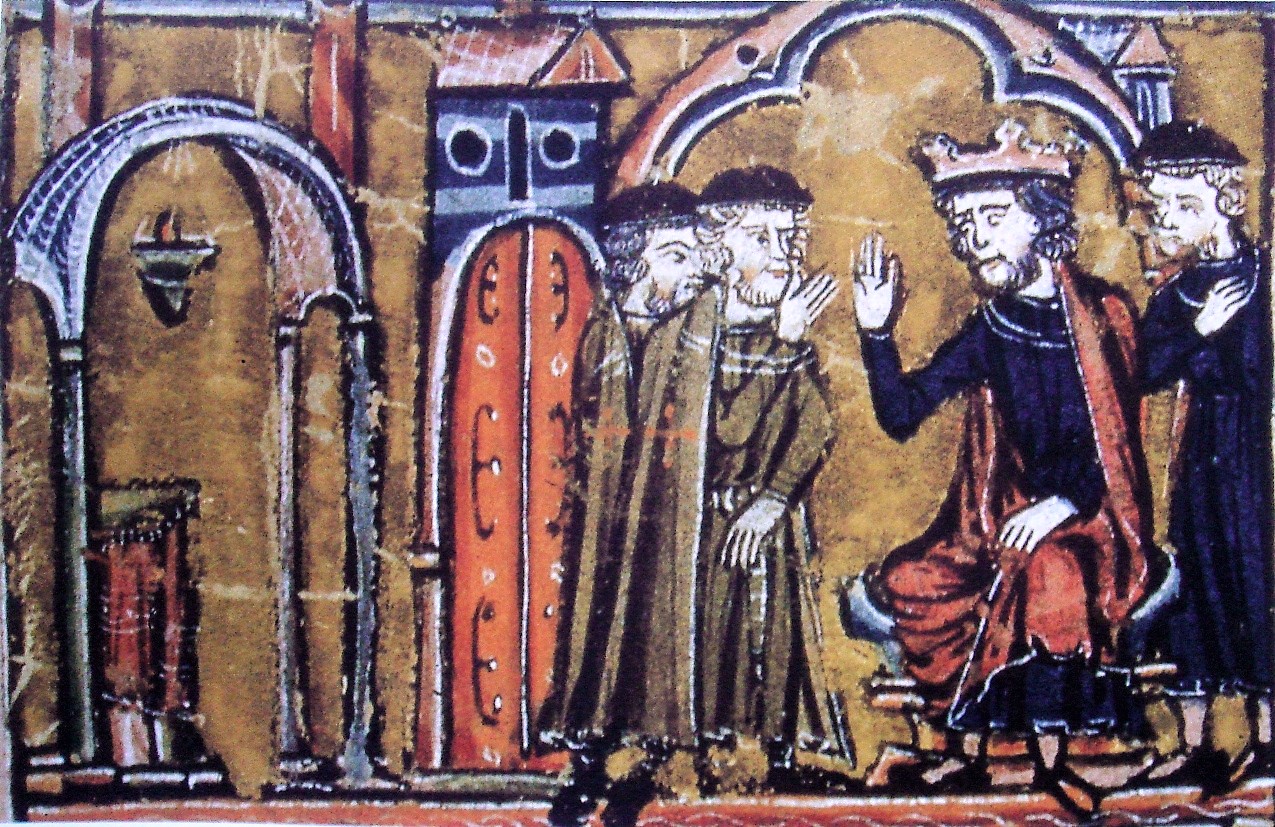|
Templars
, colors = White mantle with a red cross , colors_label = Attire , march = , mascot = Two knights riding a single horse , equipment = , equipment_label = , battles = The Crusades, including: , anniversaries = , decorations = , battle_honours = , commander1 = Hugues de Payens , commander1_label = First Grand Master , commander2 = Jacques de Molay , commander2_label = Last Grand Master , commander3 = , commander3_label = , notable_commanders = The Poor Fellow-Soldiers of Christ and of the Temple of Solomon ( la, Pauperes commilitones Christi Templique Salomonici), also known as the Order of Solomon's Temple, the Knights Templar, or simply the Templars, was ... [...More Info...] [...Related Items...] OR: [Wikipedia] [Google] [Baidu] |
Jacques De Molay
Jacques de Molay (; c. 1240–1250 – 11 or 18 March 1314), also spelled "Molai",Demurger, pp. 1-4. "So no conclusive decision can be reached, and we must stay in the realm of approximations, confining ourselves to placing Molay's date of birth somewhere around 1244/5 – 1248/9, even perhaps 1240–1250." was the 23rd and last grand master of the Knights Templar, leading the order sometime before 20 April 1292 until it was dissolved by order of Pope Clement V in 1312.Goyau, Georges. "Jacques de Molai." The Catholic Encyclopedia Vol. 10. New York: Robert Appleton Company, 1911 Though little is known of his actual life and deeds except for his last years as Grand Master, he is one of the best known Templars. Jacques de Molay's goal as grand master was to reform the order, and adjust it ... [...More Info...] [...Related Items...] OR: [Wikipedia] [Google] [Baidu] |
Seal Of The Grand Master Of The Knights Templar
The Grand Masters of the Knights Templar during the later 12th and the 13th century used a double-sided seal which showed a representation of The Dome of the Rock (or a circular dome of the Church of the Holy Sepulchre) on one side, and the Order's symbol of two knights on one horse on the other side. This design is first attested as in use by Bertrand de Blanquefort, the order's sixth Grand Master, in 1158, forty years after its foundation, and it remained in use until the dissolution of the order in 1312. There was also a smaller, single-sided seal, which showed the Dome of the Rock (or the Holy Sepulchre), only. Different seals were used by provincial masters of the order. According to a papal bull issued by Innocent IV in 1251, it was customary for successive provincial masters to use the same seal. The master of Provence continued to use an Agnus Dei seal, while the seal of the Aragonese master William of Cardona and his successors depicted a knight on horseback, carr ... [...More Info...] [...Related Items...] OR: [Wikipedia] [Google] [Baidu] |
Fall Of Ruad
The fall of Ruad in 1302 was one of the culminating events of the Crusades in the Eastern Mediterranean. When the garrison on the tiny Isle of Ruad fell, it marked the loss of the last Crusader outpost on the coast of the Levant. In 1291, the Crusaders had lost their main power base at the coastal city of Acre, and the Muslim Mamluks had been systematically destroying any remaining Crusader ports and fortresses since then, forcing the Crusaders to relocate their dwindling Kingdom of Jerusalem to the island of Cyprus. In 1299–1300, the Cypriots sought to retake the Syrian port city of Tortosa, by setting up a staging area on Ruad, two miles (3 km) off the coast of Tortosa. The plans were to coordinate an offensive between the forces of the Crusaders, and those of the Ilkhanate (Mongol Persia). However, though the Crusaders successfully established a bridgehead on the island, the Mongols did not arrive, and the Crusaders were forced to withdraw the bulk of their force ... [...More Info...] [...Related Items...] OR: [Wikipedia] [Google] [Baidu] |
Siege Of Safed (1266)
The siege of Safed (13 June – 23 July 1266) was part of the campaign of the Mamlūk sultan Baybars I to reduce the Kingdom of Jerusalem. The castle of Safed belonged to the Knights Templar and put up strong resistance. Direct assault, mining and psychological warfare were all employed to force the garrison to surrender. It was ultimately tricked into surrendering through treachery and the Templars were massacred. Baybars repaired and garrisoned the castle. The main sources for the siege from the Muslim perspective are Ibn ʿAbd al-Ẓāhir's biography of Baybars, Badr al-Dīn al-ʿAynī's ''String of Pearls'' and to a lesser extent Ibn al-Furāt's ''History of Dynasties and Kingdoms''. From the Christian perspective, there are the '' Gestes des Chiprois'', ''Estoire d'Eracles'', ''Annales de Terre Sainte'' and '' Maius chronicon Lemovicense''. Preparations According to ''De constructione castri Saphet'', an account of the construction of the castle of Safed probably written ... [...More Info...] [...Related Items...] OR: [Wikipedia] [Google] [Baidu] |
Kingdom Of Jerusalem
The Kingdom of Jerusalem ( la, Regnum Hierosolymitanum; fro, Roiaume de Jherusalem), officially known as the Latin Kingdom of Jerusalem or the Frankish Kingdom of Palestine,Example (title of works): was a Crusader state that was established in the Levant immediately after the First Crusade. It lasted for almost two hundred years, from the accession of Godfrey of Bouillon in 1099 until the siege of Acre in 1291. Its history is divided into two periods with a brief interruption in its existence, beginning with its collapse after the siege of Jerusalem in 1187 and its restoration after the Third Crusade in 1192. The original Kingdom of Jerusalem lasted from 1099 to 1187 before being almost entirely overrun by the Ayyubid Sultanate under Saladin. Following the Third Crusade, it was re-established in Acre in 1192. The re-established state is commonly known as the "Second Kingdom of Jerusalem" or alternatively as the "Kingdom of Acre" after its new capital city. Acre remain ... [...More Info...] [...Related Items...] OR: [Wikipedia] [Google] [Baidu] |
Crusades
The Crusades were a series of religious wars initiated, supported, and sometimes directed by the Latin Church in the medieval period. The best known of these Crusades are those to the Holy Land in the period between 1095 and 1291 that were intended to recover Jerusalem and its surrounding area from Islamic rule. Beginning with the First Crusade, which resulted in the recovery of Jerusalem in 1099, dozens of Crusades were fought, providing a focal point of European history for centuries. In 1095, Pope Urban II proclaimed the First Crusade at the Council of Clermont. He encouraged military support for Byzantine emperor AlexiosI against the Seljuk Turks and called for an armed pilgrimage to Jerusalem. Across all social strata in western Europe, there was an enthusiastic response. The first Crusaders had a variety of motivations, including religious salvation, satisfying feudal obligations, opportunities for renown, and economic or political advantage. Later crusades were c ... [...More Info...] [...Related Items...] OR: [Wikipedia] [Google] [Baidu] |
Military Order (religious Society)
A military order ( la, militaris ordo) is a Christian religious society of knights. The original military orders were the Knights Templar, the Knights Hospitaller, the Order of Saint James, the Order of Calatrava, and the Teutonic Knights. They arose in the Middle Ages in association with the Crusades, both in the Holy Land, the Baltics, and the Iberian peninsula; their members being dedicated to the protection of pilgrims and the defence of the Crusader states. They are the predecessors of chivalric orders. Most members of military orders were laymen who took religious vows, such as of poverty, chastity, and obedience, according to monastic ideals. The orders owned houses called commanderies all across Europe and had a hierarchical structure of leadership with the grand master at the top. The Knights Templar, the largest and most influential of the military orders, was suppressed in the early fourteenth century; only a handful of orders were established and recogniz ... [...More Info...] [...Related Items...] OR: [Wikipedia] [Google] [Baidu] |
Battle Of Marj Ayyun
The Battle of Marj Ayyun was a military confrontation fought at Marj Ayyoun near the Litani River (modern-day Lebanon) in June 1179 between the Kingdom of Jerusalem under Baldwin IV and the Ayyubid armies under the leadership of Saladin. It ended in a decisive victory for the Muslims and is considered the first in the long series of Islamic victories under Saladin against the Christians. However, the Christian king, Baldwin IV, who was crippled by leprosy, narrowly escaped being captured in the rout. Background In 1177, Saladin's Ayyubid army invaded the Latin Kingdom of Jerusalem from Egypt. In that year King Baldwin surprised and defeated the Saracen host at the Battle of Montgisard. In 1179, Saladin again invaded the Crusader states, from the direction of Damascus. He based his army at Banias and sent raiding forces to despoil villages and crops near Sidon and the coastal areas. Farmers and townspeople impoverished by Saracen raiders would be unable to pay rent to their Frank ... [...More Info...] [...Related Items...] OR: [Wikipedia] [Google] [Baidu] |
Hugues De Payens
Hugues de Payens or Payns (9 February 1070 – 24 May 1136) was the co-founder and first Grand Master of the Knights Templar. In association with Bernard of Clairvaux, he created the '' Latin Rule'', the code of behavior for the Order. Name The majority of the primary sources of information for his life are presented in Latin or the medieval French language. In French his name usually appears as ''Hugues de Payens'' or ''Payns'' (). His earliest certain appearance in documents is under the part-Latin, part-French name ''Hugo de Peans'' (1120–1125; details below). Later Latin sources call him ''Hugo de Paganis''. In English works he often appears as ''Hugh de Payns'', in Italian sometimes as ''Ugo de' Pagani'. Origin and early life There is no known early biography of Hugues de Payens in existence, nor do later writers cite such a biography. None of the sources on his later career give details of his early life. Information is therefore scanty and uncertain; embellishment ... [...More Info...] [...Related Items...] OR: [Wikipedia] [Google] [Baidu] |
Siege Of Acre (1291)
The siege of Acre (also called the fall of Acre) took place in 1291 and resulted in the Crusaders losing control of Acre to the Mamluks. It is considered one of the most important battles of the period. Although the crusading movement continued for several more centuries, the capture of the city marked the end of further crusades to the Levant. When Acre fell, the Crusaders lost their last major stronghold of the Crusader Kingdom of Jerusalem. They still maintained a fortress at the northern city of Tartus (today in north-western Syria), engaged in some coastal raids, and attempted an incursion from the tiny island of Ruad, but when they lost that as well in 1302 in the siege of Ruad, the Crusaders no longer controlled any part of the Holy Land. Background In 1187, Saladin conquered much of the Kingdom of Jerusalem (also called the Latin Kingdom), including Acre and Jerusalem, after winning the Battle of Hattin and inflicting heavy losses on the Crusaders. The Third Crusad ... [...More Info...] [...Related Items...] OR: [Wikipedia] [Google] [Baidu] |
Siege Of Acre (1189–1191)
The siege of Acre was the first significant counterattack by Guy of Lusignan, Guy of Jerusalem against Saladin, leader of the Muslims in Ayyubid dynasty, Syria and Egypt. This pivotal siege formed part of what later became known as the Third Crusade. The siege lasted from August 1189 until July 1191, in which time the city's coastal position meant the attacking Latin force were unable to fully invest the city and Saladin was unable to fully relieve it with both sides receiving supplies and resources by sea. Finally, it was a key victory for the Crusaders and a serious setback for Saladin's ambition to destroy the Crusader States, Crusader states. Background Egypt was ruled by the Shia Islam, Shi'ite Fatimid Caliphate, Fatimid dynasty from 969, independent from the Sunni Islam, Sunni Abbasid Caliphate, Abbasid rulers in Baghdad and with a rival Shi'ite caliph—that is ''successor'' to the Muslim prophet Mohammad. Governance fell to the caliph's chief administrator called the v ... [...More Info...] [...Related Items...] OR: [Wikipedia] [Google] [Baidu] |
List Of Grand Masters Of The Knights Templar
The grand master of the Knights Templar was the supreme commander of the holy order, starting with founder Hugues de Payens in 1118. Some held the office for life while others resigned life in monasteries or diplomacy. Grand masters often led their knights into battle on the front line and the numerous occupational hazards of battle made some tenures very short. Each country had its own master, and the masters reported to the grand master. He oversaw all of the operations of the order, including both the military operations in the Holy Land and Eastern Europe, and the financial and business dealings in the order's infrastructure of Western Europe. The grand master controlled the actions of the order but he was expected to act the same way as the rest of the knights. After Pope Innocent II issued the bull '' Omne datum optimum'' on behalf of the Templars in 1139, the grand master was obliged to answer only to him. List of grand masters Notes Footnotes References See also ... [...More Info...] [...Related Items...] OR: [Wikipedia] [Google] [Baidu] |





.png)